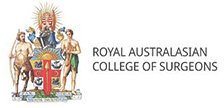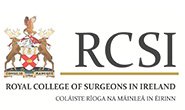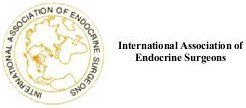Conditions
Fibroadenoma
What is Fibroadenoma?
Fibroadenoma is a benign (non-cancerous) breast tumour that commonly affects women. It is composed of glandular and stromal (connective) tissue.
Fibroadenomas are usually round or oval in shape, have smooth boundaries, and can feel like marbles within the breast. They may move slightly under the skin when touched and are generally painless.
How Does Fibroadenoma Impact Your Anatomy and Health?
Fibroadenomas are typically small, measuring 1 to 5 centimetres in diameter, although some can grow larger. They don't usually affect the overall structure of the breast unless they grow substantially, a condition known as giant fibroadenoma, which can distort the shape and size of the breast.
Generally, fibroadenomas are not linked to an increased risk of breast cancer. However, a subtype known as complex fibroadenomas, which contain cysts or other changes, may slightly increase the risk of developing breast cancer later in life.
The increased risk is not because the fibroadenoma itself becomes cancerous but because the cells within the complex fibroadenoma show features, such as epithelial calcifications or proliferative changes, that indicate a slightly elevated risk of future cancer development.
From a health perspective, while fibroadenomas are not dangerous, they can cause emotional or psychological distress due to uncertainty or fear about the presence of a breast lump. It's essential for individuals with fibroadenomas to monitor any changes in the size or feel of the lump and to maintain regular check-ups to ensure they remain benign.
Risk Factors for Fibroadenoma
Fibroadenomas are most common in young women during their reproductive years, particularly those between 15 and 30 years old.
Factors that might increase the risk of developing fibroadenomas include
- early menstruation,
- a family history of fibroadenomas or breast cancer, and
- the use of hormone therapy, particularly during adolescence.
There is no specific geographical, racial, or ethnic predominance, as these tumours can occur in women of any background. However, some studies suggest they may be slightly more common in African-American women.
Causes of Fibroadenoma
The exact cause of fibroadenoma is not fully understood, but it is believed to be related to reproductive hormones.
Fibroadenomas are thought to result from an abnormal response to hormonal changes, primarily involving oestrogen, as these lumps often increase in size during pregnancy or when using hormone therapy and decrease in size after menopause.
Genetic factors might also play a role, though specific genes associated with fibroadenomas have not been conclusively identified.
Symptoms of Fibroadenoma
Fibroadenomas are usually asymptomatic, meaning they typically do not cause any symptoms. When symptoms are present, they generally include:
- A smooth, firm breast lump that can be moved slightly under the skin when touched.
- The lump is usually painless.
- It has a well-defined shape, often described as round or oval.
- The size can vary, but most are between 1 and 5 centimetres.
Types of Fibroadenoma
Fibroadenomas can be categorised into several types based on their histological features:
- Simple Fibroadenomas: These are the most common type and consist of stromal and glandular tissue without any cellular atypia. They do not increase the risk of breast cancer.
- Complex Fibroadenomas contain other elements such as cysts, sclerosing adenosis, or epithelial calcifications. Compared to simple fibroadenomas, complex fibroadenomas are associated with a slightly higher risk of developing breast cancer later in life.
- Juvenile Fibroadenomas: This type is more common in adolescent girls and can grow larger than typical fibroadenomas. They are usually benign and may sometimes resolve on their own.
- Giant Fibroadenomas: These can grow to more than 5 centimetres in diameter and may distort the breast's shape or cause discomfort due to size.
Diagnosis of Fibroadenoma
- Clinical Breast Exam: The doctor will examine the breasts for lumps and other abnormalities.
- Imaging Tests: Mammography and ultrasound are commonly used to help distinguish fibroadenomas from other types of breast lumps.
- Biopsy: A definitive diagnosis is made through a biopsy, where a sample of the tissue from the lump is removed and examined microscopically. Types of biopsies include fine needle aspiration, core needle biopsy, and occasionally, an excisional biopsy, which involves removing the entire lump for analysis.
Treatment of Fibroadenoma
- Observation: Many fibroadenomas, especially small and asymptomatic ones, do not require immediate treatment and are simply monitored over time for changes in size or feel.
- Surgical Removal: If a fibroadenoma is large, painful, or growing, it may be surgically removed through a procedure known as a lumpectomy or excisional biopsy.
What if Fibroadenoma is Untreated?
Leaving a fibroadenoma untreated is often a viable option, especially if it remains stable in size and causes no discomfort.
Most fibroadenomas do not increase the risk of breast cancer, particularly the simple type. However, regular monitoring is crucial to detect any changes that require intervention.
In cases where the fibroadenoma is complex, there is a slightly elevated risk of developing breast cancer, which necessitates careful follow-up with doctors.
Duct Ectasia
PHYSIOLOGY
Duct ectasia is a condition characterised by widening of a milk duct beneath the nipple along with thickening of the duct walls and clogging of the duct with a sticky, thick substance. There may be a dirty white, green, or black nipple discharge, pain and redness in the nipple and surrounding tissue and a thickening or lump near the blocked milk duct.
CAUSE
This condition may occur due to age-related changes in the breast with glandular tissue being replaced by fatty tissue, smoking which has been associated with inflamed and widened milk ducts, and inversion of the nipple which may cause obstruction, infection, and inflammation of the milk ducts.
INDICATIONS FOR SURGERY
The condition may resolve on its own in some cases. If conservative therapy such as pain medications and antibiotics do not resolve the symptoms, surgical removal of the affected milk duct is indicated. The procedure can be performed through a tiny incision made at the periphery of the areola (the coloured area around the nipple).
Simple Breast Cysts
PHYSIOLOGY
Simple breast cysts are fluid-filled sacs that develop in the breast tissue. They may occur as single or multiple cysts in one or both breasts and are circular or oval shaped. They can develop in women at any age but are mostly seen in the 30 to 50-year age group. They vary in size from microscopic to 1-2 inches. Simple cysts are thought to develop due to the reaction of glandular breast tissue to hormonal changes and may become painful and large just before a menstrual period. In some cases, the cysts disappear after menopause.







